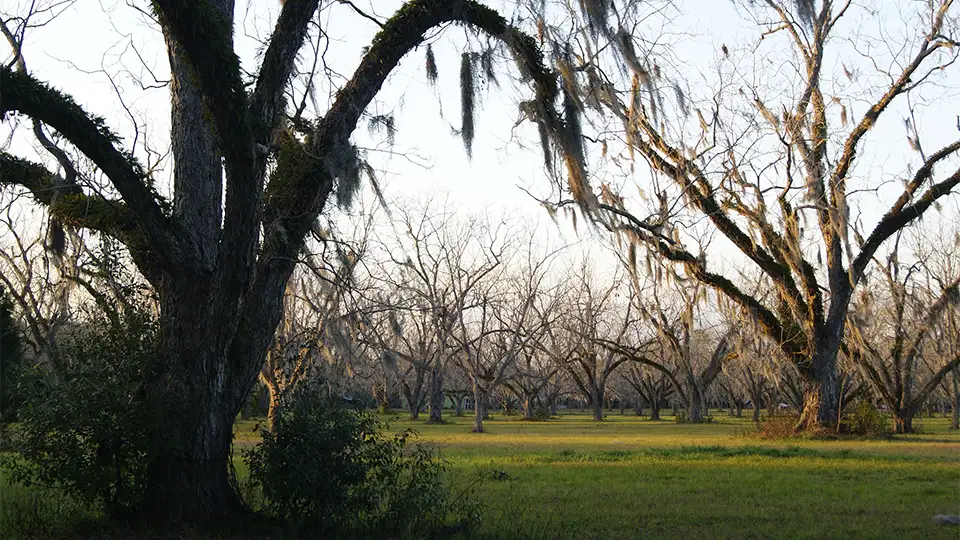
The natural burials are attracting more and more people and with good reasoning. A reduced footprint on nature, eternal rest in the middle of the forest, no grave maintenance for loved ones, and often a less expensive burial. These special areas provide a great alternative to a regular cemetery which has great advantages. In the UK, there are over 270 natural burial sites. Some are operated by local authorities alongside their more traditional cemeteries; so whether you are religious or not, you can find a peaceful spot in the most beautiful woodland. You can visit the site in advance and see if it works for you and your family.
Key takeaways
- Natural burials are becoming more popular and are more environmentally friendly.
- Embalmed bodies are not allowed on natural burial sites.
- Only biodegradable coffins are allowed on natural burial sites.
- Headstones are not allowed on these burial sites.
Table of contents

For several years now, natural burials in a forest have become more and more popular. The character of a natural forest should not be destroyed by burial, but instead, maintained. The maintenance of the forest area is taken over by employees that belong to the Association of Natural Burial Grounds.
All of these grounds are all bound by their Code of Conduct, which ensures excellent care as well as respect and dignity. It allows the natural recycling of the body, and a return to nature. Whilst it may not seem an overly western trend, it is a good alternative to other contemporary western burial methods.
Natural burials vary from a traditional burial, and some of the differences will be that a headstone is not usually permitted and therefore it makes it a much more ‘organic’ process throughout. Coffins are often biodegradable and therefore sustainable for the planet, assisting with the carbon footprint.
Many people opt for willow, wicker or bamboo for example. Often the grave is not personalised, it is left completely natural as a part of the earth. The area will be kept natural and therefore there will not be huge cultivations in the area. It will be left as a natural burial ground, and therefore is an eco-friendly and cost-friendly path to take.
Advantages and disadvantages of natural burials
The forest burial are natural burials in the roots of freely growing trees. But is it also the right type of burial for you? We have once again summarised the advantages of this type of burial so that you can see how it may work for you:
Advantages
- Natural burials: The ashes of the deceased are absorbed by the roots of a tree and return to the cycle of life. Many people find this idea very comforting, especially in a world where climate change and other global issues are impacting the environment. Ashes can provide welcome nutrients to areas of woodland.
- Free choice of location: In contrast to some crowded city cemeteries, you can freely choose the burial forest. There are around two hundred forests to choose from in the UK, providing you with the chance to find a burial site that means something to you without having to fight for a space.
- Cost savings: A forest burial is usually much cheaper than a conventional burial or cremation. Not only are the burial fees lower, but there are also no costs for the tombstone and grave maintenance, giving your family the chance to visit the site without having to do chores in the process.
- No maintenance effort: In the forest, nature takes care of grave maintenance. This means that after the burial in the forest, there is no need to maintain the grave for the relatives.
- A permanent legacy: Forests live for a very long time. Natural burials in a place like this means that you contribute to the growth that will keep an area lush and green for centuries. This contribution can be viewed as a permanent legacy, with natural burial sites receiving the same protection as graveyards.

It’s important to understand the disadvantages of this natural burial before you make a decision like this. All of the disadvantages below can be easily countered by the benefits of natural burials, though they will impact some people more than others.
Disadvantages

- No gravestone: This will be a benefit to some, but having no gravestone can be a downside to others, especially if you want to mark your burial location. Modern technology makes it easy to log the specific location where ashes or a body are spread or buried, so this isn’t a problem like it used to be.
- Religious importance: For some people, being buried near a church or other religious site is very important. Religion is a major part of modern life for many people, though others won’t be as concerned with needing to be buried near places like this.
- Challenging ceremonies: In some cases, natural burial sites will be hard for certain people to access. You can make sure that your chosen site is accessible to everyone in your group when you pay a visit.
Finding natural funeral burials near you
Most people want to be buried in a location that means something to them. This means that you need to be able to access sites for natural funeral burials that match your desires. This is generally easy across the UK, with countless locations on offer for those who want to use this type of service.

You can find natural burial sites in London, the South East, the South West, and just about every other part of the UK, along with some places that are easily accessible in EU countries like the Netherlands. This gives you a wealth of options when you are searching for a natural burial site that suits you.
It’s important to take the time to visit the sites for natural burials that you are interested in, as places like this can appear much different when you see them in person versus images online.
The Natural Death Centre provides a great resource for those looking for natural burials. You can view all of the sites available in each area, providing you with the means to learn about all of the options you have available.
Planning natural burials
Planning natural burials for yourself or someone else is a simple process that most people can organise. Many burial sites will say that you need a funeral director to arrange a burial, though this isn’t true in the UK. You are free to plan your funeral yourself, and many people choose to do this to ensure that they get a truly personal touch.

Finding sites for natural burials
This process begins with a little bit of hunting. You need to find a natural burial site that means something to you, whether this is because of the location, the beauty of the site, or anything else that draws you to it. There are countless sites available for you to choose from, making this a relatively easy process.
Natural burials: Booking the funeral
If you are planning a funeral for someone who has already passed, you will need to book a date for your funeral with the site that you have chosen. This process is easy, and you can do it mostly over the telephone if needed. Although you won’t know when you will need your burial site if you are planning your own funeral in advance, you can still pay for the ceremony and make plans with the site that you prefer for natural burials.

Natural Funeral Burials: Planning the service
Planning your natural funeral service can be done in a number of different ways. Some people choose to be cremated in a crematorium before having their ashes taken to a natural burial site, while others will prefer to have their bodies buried at a natural site inside a biodegradable coffin. This is just one element of your planning, though.
You also need to consider the type of service you want, along with the guests who will attend. Making plans like this can be a challenging process, especially when you are grieving. You can usually get help from the companies you are working with, but you can also talk to a funeral director if you can’t do it by yourself.
As you can see, planning an inexpensive funeral with a natural burial is easier than many people expect. Being buried in a forest is a great way to ensure that you are contributing to the world once you die.
Environmentally friendly natural burials
The environment means a lot to most people. The idea of minimising the footprint of your burial can be very enticing, especially when you consider the benefits that a natural burial comes with. Of course, though, being environmentally friendly comes with a lot of perks, and one of these is the types of natural burial sites that are available. Being buried in a woodland means that your relatives and other loved ones will be able to visit a beautiful location when they want to see where you were buried. This can make this experience a lot more relaxed, without other people disturbing one another when they are trying to grieve.
Natural Burials: Making the best decision
You can explore the different locations by making an appointment and visiting. You can reserve your personal spot or for someone else now or in the future. So what else is left? Well, what else does a natural burial really involve? You can use a celebrant or any type of official person for the ceremony, and make the funeral feel as special as you desire.
In the UK, you have the opportunity to choose a suitable area and determine whether it should be an individual or a family grave. The Association of Natural Burial Grounds (ANBG) was established by The Natural Death Centre charity in 1994.
Conclusion
In more recent times, there is a definite trend as more people appreciate the beauty of natural burials and their connection to nature and mother earth, in a less fabricated way. You can find over 270 dedicated natural burial grounds that have been created in the UK. So if this sounds the best option then there are plenty of ways to find out more. This natural pathway is very natural and with great respect to both the deceased and the earth.
Disclaimer: Please note that the images used in this blog are examples of what a woodland or field natural burial site could look like and are not natural burial sites.



